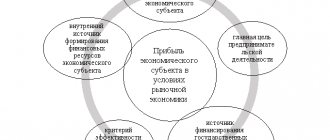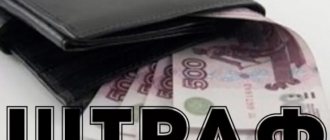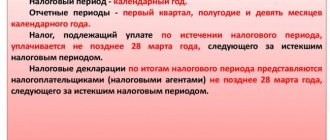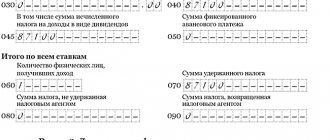When is trade turnover taxed and when is it not?
Four main groups of trade turnover subject to VAT are presented in the Tax Code of the Russian Federation:
- Paid or gratuitous sale of goods, services, labor, collateral in the Russian Federation, transfer of rights to property, to trade items on the basis of replacement of obligations by agreement of the parties or compensation, which is confirmed by paragraph 1 of paragraph 1 of Article 146 of the Tax Code.
- Sales of goods and services to meet the needs of the organization, but not for the purpose of making a profit. Such transfer of products is subject to VAT if the costs are recognized as economically unjustified or such costs are included in the item of expenses not taken into account when calculating income tax. Art. 252, Article 270 of the Tax Code of the Russian Federation.
- Carrying out construction and installation activities for your own needs. If an organization performs this type of work independently, then taxation is present (clause 3, clause 1, article 146 of the Tax Code). If the construction process is provided by a contractor, then there is no VAT.
- Import of trade items into the territory of the Russian Federation (clause 4, clause 1, article 146 of the Tax Code of the Russian Federation and clause 3, clause 1, article 2 of the “Customs Code of the Eurasian Economic Union”).
Revenue will not be subject to value added tax for manipulations that are not accepted as sales or are not subject to taxation. For example:
- Currency transactions (clause 1, clause 3, article 29 of the Tax Code of the Russian Federation). Transactions related to numismatics do not fall into this clause.
- Transfer of objects of ownership to the legal successor during the reorganization of companies (clause 2, clause 3, article 39 of the Tax Code of the Russian Federation).
- Return of assets to a person who was a member of a business company as part of the initial contribution in the event of termination of the company’s activities or withdrawal of a participant from its membership (clause 5, clause 3, article 39 of the Tax Code of the Russian Federation).
- Transfer of housing facilities, electrical networks, roads, etc. to authorities (clause 2, clause 2, article 146 of the Tax Code of the Russian Federation).
- Sale of land or land shares (clause 6, clause 2, article 146 of the Tax Code of the Russian Federation).
- Sale of property or rights to it in the event of bankruptcy of debtors (clause 15, clause 2, article 146 of the Tax Code of the Russian Federation).
There is also a closed list of processes named in paragraphs 1-3 of Article 149 of the Tax Code . Their peculiarity is that, being objects of taxation, they are not recognized as subject to tax and are exempt from VAT.
Goods not subject to VAT include:
- Approved list of medical products (clause 1, clause 2, article 149 of the Tax Code of the Russian Federation).
- Food products for medical organizations and canteens of kindergartens, schools, etc. (subclause 5, clause 2, article 149 of the Tax Code).
- Residential buildings and shares of premises in them (clause 22, clause 3, article 149 of the Tax Code of the Russian Federation).
Calculation
To understand the basic principles, let's look at an example of calculating income tax for dummies.
Kolibri LLC produces and sells soft toys. Let's find out the amount of tax that the company will pay for 2021 if:
- The LLC received a bank loan for 500,000 rubles;
- sold toys for 1,200,000 rubles including VAT;
- used raw materials for production worth 350,000 rubles;
- paid wages to workers in the amount of 250,000 rubles;
- insurance premiums amounted to 40,000 rubles;
- carried out depreciation in the amount of 30,000 rubles;
- paid interest on the loan in the amount of 25,000 rubles;
- wants to take into account last year’s loss of 120,000 rubles.
Expenses of Kolibri LLC in 2021:
Since income is calculated without VAT, it will be 1,000,000 rubles at a VAT rate of 20%. And 200,000 rubles is the amount of VAT that the LLC will transfer to the state. Loan amounts are not subject to income tax; they are simply not included in the tax base under paragraphs. 10 p. 1 art. 251 Tax Code of the Russian Federation. Therefore, a 500,000 ruble loan is not considered income.
Then the profit of Kolibri LLC in 2021:
This is income minus expenses and minus last year's loss.
Income tax formula:
Of which:
go to the budget of the Russian Federation;
go to the regional budget.
Using simple formulas, we showed how income tax is calculated: we use the example of Kolibri LLC below to show calculations using an online calculator.
The convenient >1C:BusinessStart application allows you to automatically calculate tax amounts; you do not need to monitor changes in rates, the service is updated automatically, taking into account the latest changes in legislation. The program will warn you about the deadlines for submitting reports and paying taxes, and will tell you what and how to do.
What is this?
Revenue represents the income that an organization or enterprise receives over a certain period of time through the sale of a number of goods or services. This is the final stage of the company’s commercial or non-commercial activity, and the calculation is made by multiplying the price of the product by the number of units sold.
Net sales revenue is recognized as profit minus indirect taxes . It is an indicator of the organization's performance.
Revenue from the sale of sales objects is divided into two types:
- Gross revenue is the total amount including taxation (excise taxes, customs duties, VAT).
- Net revenue is profit from sales of products, works or services without taxation.
You will learn about how such sales revenue is calculated in a special material.
The tax calculation looks like this: let’s denote the amount by the letter C, then VAT=C*18/100. According to this calculation, with revenue of 100,000 rubles, VAT will be 18,000.
Including tax
To make such a calculation, the amount including VAT is designated Sn. The calculation turns out like this:
Сн = С + С*18/100 = С*(1+18/100) = С*1.18.
Then, with revenue of 100,000 rubles, the result will be 118,000.
In the Russian Federation, an invoice document is used to calculate value added tax . The law establishes clear rules for filling out this form and its format.
Without him
To calculate the value of profit without this indirect tax, the same formula is used as a basis. When designating N=18/100, it turns out that Сн = С+ N*С = С*(1+N).
Thus, C = Cn/(1+N) = Cn/(1+0.18) = Cn/1.18.
If difficulties arise when working with formulas, then specialized online calculators simplify the work of taxpayers . With their help, data is calculated quickly and accurately.
Exemption from payment if sales volumes are less than two million rubles
Firms and individual entrepreneurs whose sales volumes are not high, according to the Code of the Russian Federation, have the right not to pay value added tax. This benefit comes into force if, for three calendar months, the total income from the sale of trade items or the provision of services (not taking into account tax) is less than 2 million rubles (clause 1 of Article 145 of the Tax Code of the Russian Federation).
Important! If, if there is a tax exemption, during the next three months the total profit (excluding tax) exceeds this amount, then the preferential right is canceled. The tax is restored and payable in the accepted manner, starting from the month where the excess occurred (clause 5 of Article 145 of the Tax Code).
We talked about the rules for displaying income of individual entrepreneurs on the simplified tax system here.
Advance payments
Income tax is paid in advance payments every month or quarter, and then at the end of the year. Transferring advances quarterly in 2021 is allowed to those companies whose sales revenues do not exceed 15 million rubles per quarter over the previous 4 quarters. Other legal entities pay advances monthly. >We described how to calculate advances for income tax in a separate article. Quarterly advances are calculated from actual income, and monthly advances are calculated from estimated income (based on data for the previous quarter).
Step-by-step instructions: how to plan sales income and costs in Excel
An Excel spreadsheet is used to plan revenue and production costs . The standard table for calculating efficiency has four fields:
- Tax rates (cell A1:B3).
- Income from the sale of trade items, expenses and debit VAT (A5:B7).
- Determination of value added tax for payment to the budget (A9:B10).
- Calculation of revenue and taxes on profit and turnover (A12:B17) (find out the main differences between revenue and turnover here).
Information is entered into the first two fields, and the next two fields process it.
- The type of calculation of the tax liability for VAT according to the table is as follows: =ROUND(B5*(B1/(1+B1));2).
- To calculate the amount of tax to be paid to the state treasury, you need to subtract the amount of the tax credit from the amount of tax liabilities (B10) = B9-B7.
- GP (gross profit) excluding VAT (cell B12) is calculated by subtracting the value of tax liabilities from the amount of revenue = B5-B9.
- Sales revenue is determined by subtracting costs = B12-B6 from the amount of VP.
- To calculate the turnover tax, VP is multiplied by the turnover tax rate = ROUND(B12*VZ;2).
- Revenue subject to taxation is the difference between the realized profit and the amount of turnover tax = B13-B14.
- Revenue tax is the product of the amount subject to taxation and the income tax rate, the result is rounded to the second digit = ROUND(B15*B2;2).
- Net profit is calculated by deducting the amount of income tax from taxable income = B15-B16.
Using an Excel spreadsheet is convenient because by changing the tax rate data, you can easily adapt to the current tax system. After changing the values of costs and sales amounts, the final result is immediately reflected. Excel offers various methods for entering data, in addition, formulas and a variety of functions provide additional possibilities for calculations.
We recommend that you pay attention to other publications by our experts, after reading which you will learn:
- How does revenue differ from cost, income and profit?
- How to calculate annual revenue?
- What are the reasons for the decline in revenue and how can it be increased?
Moment of recognition of income and expenses
>The moment of recognition is the period of time in which income or expenses are reflected in income tax accounting. There are two such moments. They depend on the method of recognizing income and expenses:
- cash method;
- accrual method.
The company chooses one of the methods, and before December 31 (without waiting for the start of the next tax period) informs the territorial body of the Federal Tax Service of Russia about its choice.
When applying methods, firms take into account amounts at different points in time. Let's look into the nuances.
The cash method assumes that:
- income is taken into account at the time of receipt at the cash desk or in the company's current account, not earlier;
- expenses are taken into account at the time of debiting from the account or paying from the cash register, not earlier;
- When paying tax, amounts are taken into account according to the dates of receipt or write-off.
Accrual method:
- income is taken into account at the time of occurrence (under contracts or payment orders), and not upon direct payment;
- expenses are taken into account at the time of occurrence, and not when funds are written off from accounts;
- When paying tax, amounts are taken into account based on documented dates, even if payment actually occurred later.
Example:
Kolibri LLC issued an invoice for office rent in March, but payment was made only in June. Under the cash method, the accountant of Kolibri LLC reflects the expenses for renting an office in June - upon the transfer of money. In tax accounting, this expense is written off in the 2nd quarter. Under the accrual method, the accountant of Kolibri LLC takes into account rental expenses in March, when the company should have paid it. In tax accounting, this expense is reflected in the first quarter.
All enterprises can use the accrual method. But the use of the cash method is limited:
- Banks are prohibited from using it;
- Firms recognize income and expenses in fact only if revenue does not exceed 1 million rubles. for each of the last four quarters;
- If, when applying the method, the limit is exceeded, then the company is obliged to switch to the accrual method from the beginning of the current year.
What is the tax base if the company suffers a loss?
According to tax accounting rules, the profit of an organization cannot be negative. Even if there is a loss at the end of the year, the tax base is recognized as zero. The tax in this case is also zero. Tax accounting registers must confirm the correctness of the tax base calculation. It is mandatory to submit a declaration, even if the amount is zero.
Payment distribution
To distribute VAT on revenue, use the proportion of transactions subject to and non-taxable . The tax is deducted or included in the price of products and services (clause 4, clause 4, article 170 of the Tax Code of the Russian Federation).
If VAT is deducted, the proportion looks like this: ST (with VAT) / ST (total), ST (with VAT) is the price of products or services, the sale of which is subject to value added tax; ST (total) – the total price of goods or services sold in the tax period.
If the tax is included in the cost of products, then the following proportion is used : ST (excluding VAT) / ST (total), ST (excluding VAT) - the price of goods or services not subject to VAT; ST (total) – the total price of goods or services sold in the tax period.
The distribution of VAT on revenue does not include the following receipts:
- Interest on bank deposits and account balances.
- Profit on shares or shares in the authorized capital.
- Cash from payment of fines on loans and borrowings, violation of the terms of lending agreements.
- The discount rate charged by banks when purchasing bills of exchange.
- Cash received by subsidiaries from parent companies.
Attention! Expenses for the distribution of VAT include items of trade that participated in trade turnover on the territory of the Russian Federation. Production costs are necessarily taken into account in the cost of goods. The proportion must be drawn up strictly according to the regulations.
Discrepancy with VAT income and profit
Tax authorities always study income based on profit and VAT in order to identify non-taxable revenue. To do this, the information from both declarations is verified. Check line 010+020 (sheet 02) in Profit and line 010 (section 3) in VAT.
But additional factors influence the indicators, which complicates the task. For example, the value added tax base increases due to returns to suppliers, but revenue does not. Income decreases with returns from customers, but tax does not.
Therefore, it is quite difficult to understand the discrepancies between profit and VAT. The tax base is often violated due to accounting errors , so in practice equality between the values of two declarations is not respected.
Causes
The reasons for the discrepancy between VAT and profit may be as follows:
- Acquisition of property upon removal of fixed assets from circulation (Clause 13, Article 250 of the Tax Code of the Russian Federation).
- Detection of surpluses when comparing accounting and actual data (clause 20 of article 250 of the Tax Code of the Russian Federation).
- Positive differences in amounts and rates (clause 2, 11, article 250 of the Tax Code of the Russian Federation).
- Reconstruction of the cash reserve (clause 7 of Article 250 of the Tax Code of the Russian Federation).
- Removal of loan debt due to the expiration of the statute of limitations (Clause 18, Article 250 of the Tax Code).
- Sales of trade objects whose sales area is not the Russian Federation (Articles 147, 148; Clause 1, Clause 1, Article 248; Clause 1, Article 249 of the Tax Code of the Russian Federation).
- Acquisition of interest on loans issued or on the balance of money in the account (clause 6 of Article 250 of the Tax Code).
A number of transactions are taxable but do not generate revenue. This refers to the gratuitous transfer of trade objects or the provision of services for the needs of the organization itself. They are not included in the income tax return, but are reflected in lines 010 or 030 of column 3 (section 3) of the VAT return.
Reference! If an entrepreneur exports goods, then the data always diverges, since income from exported products is included in the declarations in different periods.
In the income tax return, proceeds are entered directly during the period of sale of trade items (clause 1 of article 249, clause 3 of article 271 of the Tax Code of the Russian Federation), and in VAT - after 180 days after shipment or during the preparation of papers proving the right to use a zero VAT rate.
Explanations from the Federal Tax Service
Explanations must be submitted to the tax office before the expiration of 5 days from the date of receipt of the notice (clause 2, 6, article 6.1, clause 3, article 88 of the Tax Code of the Russian Federation). It is allowed to provide explanations in free form and always in writing, and the tax inspector must put a note about the receipt of the paper (the document must be handed over in person, and not by mail).
The note must contain the reasons for the discrepancies in the declarations, as well as links to articles of the Tax Code confirming the legality of their existence. If the reasons for the discrepancy in data are correctly compiled and justified, and provided to the tax inspectorate on time, then there is a possibility that in the future inspectors will not send similar requests.
Does VAT deduction depend on income tax?
If expenses were not taken into account when calculating income tax, the “input” VAT on them cannot be deducted. Many accountants think so. How valid is this statement?
What do inspectors pay attention to first when checking for value added tax? That's right, for deductions. Especially if the VAT return is claimed for refund. Tax officials thoroughly study invoices and primary documents and, if they do not find any mandatory details and information in them, they remove the declared deductions. These are the rules of the game: the presence of an error-free invoice is one of the mandatory conditions prescribed in Chapter 21 of the Tax Code of the Russian Federation. But it happens that controllers refuse to deduct “input” VAT on goods, works, and services due to the fact that they considered the costs of their acquisition to be economically unjustified. But there is no such condition in the chapter on value added tax! What then are these inspectors’ arguments based on? And what do the courts think about this reason for refusing to offset the “input” VAT? Let's figure it out.







